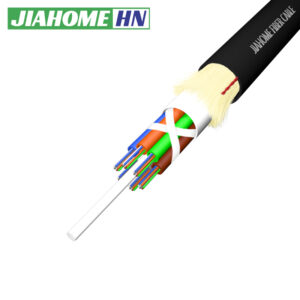Fiber Optic Cable Splice Closure/Joint Box/Joint Closure
APPLICATION:
Direct burial: No need for any hangers, it can be directly buried in the ground for use
Pipeline: use the pipe hanger, which can be fixed on the pipe wall for use
Overhead: Use overhead hangers, which can be hung on utility poles
描述
Fiber Optic Splice enclosure is a fiber management product typically used with outdoor fiber optical cables. It provides space and protection for the fiber optic cable splicing and joint. Fiber Optic Splice Enclosure is a protective housing used to safeguard and manage fiber optic splices. These enclosures are essential in both aerial and underground fiber optic installations. Fiber splice closure is used for aerial, strand-mount FTTH “tap” locations where drop cables are spliced to distribution cables. Powerlink supplies two types of fiber splice closures which are the horizontal (inline) type and the vertical (dome) type. Both are made of excellent engineering plastics to be waterproof and dust proof. And with various ports types, they can fit different fiber optic core numbers.
Fiber Optic Splice Enclosure Purpose
- Protection: The primary purpose of a fiber optic splice enclosure is to protect the spliced fibers from environmental factors such as moisture, dust, dirt, and physical damage. This ensures the longevity and reliability of the fiber optic connection.
- Organization: The enclosure helps organize the fiber splices, keeping them neat and preventing any stress or bending that could damage the fibers. It also provides a secure and stable environment to minimize signal loss.
Fiber Optic Splice Enclosures Types
- Aerial Enclosures: These are designed to be mounted on poles or towers and are typically used in aerial fiber optic networks. They are built to withstand outdoor conditions, including UV exposure, rain, and wind.
- Underground Enclosures: These are buried below ground, often in vaults or manholes, to protect splices in underground networks. They are typically waterproof and designed to withstand the pressures of being underground.
- Dome-Type Enclosures: Shaped like a dome, these enclosures are commonly used in outdoor settings, providing robust protection and easy access for maintenance.
- In-Line Enclosures: These are more cylindrical and are designed to be installed along the length of the fiber optic cable. They are commonly used in both aerial and underground applications.
Splice Enclosure Key Features
- Waterproofing: Most enclosures are designed to be waterproof, often featuring gaskets and sealing materials to keep moisture out.
- Mechanical Strength: The enclosure must be strong enough to protect the splices from physical damage, whether due to handling during installation or external pressures like those found underground.
- Capacity: Enclosures come in various sizes, capable of holding different numbers of splices. Some are designed for small networks, while others can manage hundreds of splices.
- Cable Entry Ports: These allow multiple cables to enter the enclosure. The number of ports can vary depending on the specific model and application.
- Environmental Protection: Enclosures are often rated for specific environmental conditions, such as IP ratings that indicate their level of protection against dust and water.
Installation and Use
- Splicing: The enclosure is used after fiber optic cables are spliced together, which typically involves fusing or mechanically joining the optical fibers.
- Organization: The fibers are organized within the enclosure, often using splice trays that hold the spliced fibers securely. This organization helps prevent damage and makes future maintenance easier.
- Sealing: After the splices are organized, the enclosure is sealed to protect against environmental factors. This seal is critical to maintaining the integrity of the splices over time.







